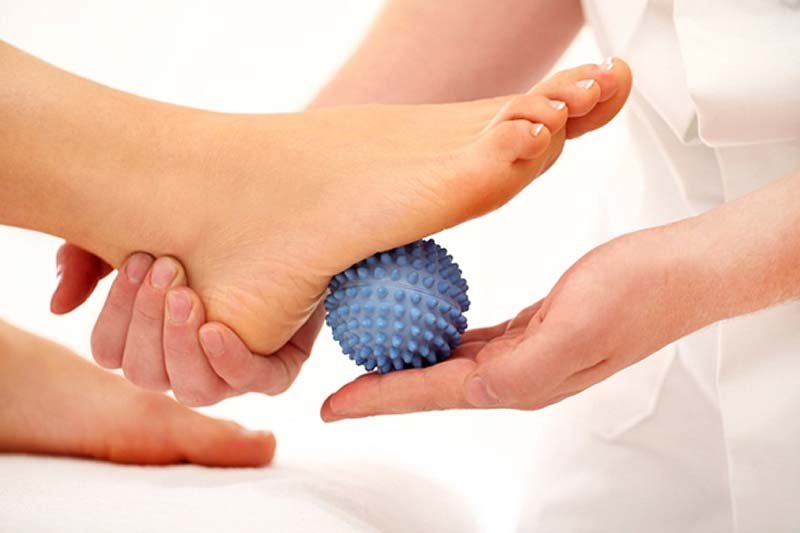Foot Care in Jobs Involving Longs Hours of Standing and Walking : Foot trauma and injury is often associated with accidents involving the foot, or more commonly linked to athletes and sportspersons. However, sprains and fractures constitute just a miniscule fraction of the possible foot injuries that we are susceptible to. There are a host of other foot problems that can potentially develop in a job that requires constant standing.
These are, in a sense, workplace hazards, though they might not be outright termed as such. While foot fatigue is probably the most easily identifiable problem, you may also develop callouses, toe malformation, corns and severely aching feet due to long hours of standing.
Which category of employees are most likely to develop problems of the feet at their respective workplaces?
- Healthcare workers are expected to spend a lot of their time on their feet or walking about. These include nurses, paramedics and other medical support staff.
- Those working at retail counters in supermarkets and clothing stores.
- Hospitality industry jobs, especially those involved in food and beverage production and service not only involve long hours on your feet, they can also be extremely stressful, depending on how busy the restaurant or hotel is on that day.
- Teachers are a group that are susceptible to problems involving their feet. The very nature of the job involves walking around or standing for long hours.
- Hairdressers are also another category of individuals who need to spend long hours of work on their feet.
Common ailments that people who work long hours standing are prone to:
- Foot Blisters. A very common problem of the feet, a foot blister is a small, fluid filled raised bubble that develops on the surface of the foot. Standing for long hours or wearing new footwear are some of the common causes of foot blisters.
- Bunions. A bunion is a painful hump that develops at the base of the big toe and is formed at the joints, leading to increased pressure and pain on that point when you walk.
- Flat Foot. This is a condition in which the arch or the inner part of the foot is either very low, or not arched at all. While the symptoms can range from mild discomfort to moderate to severe pain, people having flat feet are likely to find it more difficult to handle long hours of standing at work.
- Corns and Calluses. Repeated pressure due to long hours on your feet can cause corns and calluses. This is identified through thickened areas of skin or a small hard bump on the affected area.
- Plantar Fasciitis. One of the most common causes of heel pain, Plantar Fasciitis is the painful inflammation of tissue that is beneath the foot and connects the heel bone to the toes. While runners are found to be more prone to this condition, standing for prolonged period of time without adequate footwear support has also been found to be one of the causes.
- Sweaty Feet and Fungal Infections. Hyperhidrosis or excessive seating of the feet can also occur due to bad footwear and excessive hours of standing or walking. A common fungal infection of the toes is Athletes Foot’, which can cause scaling and itchiness of the feet.
- Aching Feet. The very act of prolonged walking and standing can lead to minor injuries to the tissues, tendons and bones of our feet. Ignoring these early symptoms can lead to more serious foot problems that may require advanced medical intervention.
The above ailments can be further complicated when the job involves standing on hard and unyielding floors such as concrete. Walking on such hard floors has a further compounding effect on already occurring foot and heel problems. The human foot has been designed keeping the right kind of mobility in mind, and continuous standing can result in misaligned bones.
Poorly fitting or unsuitable footwear can also exacerbate the medical condition- high heels are especially unforgiving and are a complete no’s for any jobs that involves long hours of standing.
Minimizing and reducing foot related problems when standing for long hours:
Here are a few simple tips that one can follow to minimize the stress on feet especially when your job involves standing continuously.
1) Wearing the right kind of footwear
Footwear plays a crucial role in ensuring the comfort of your feet. The sandals or shoes that you wear to work should not be too tight, as this can cause blisters or calluses. Pointy, tapering shoes may pack your toes in too tightly and cause malformation of the toes. Avoid wearing high heels for long hours; you may opt for lightweight platform heels and avoid stilettos completely. Wear shoes that allow your feet to breathe, thus minimizing the chances of developing foot fungus. Follow this link for a comprehensive guide to the correct method of buying shoes suitable with your kind of work:
http://shoestracker.com/best-shoes-for-standing-all-day/
2) Flooring Material and Design
Most managers and entrepreneurs are aware of the foot related problems that can arise in case their employees need to stand for long hours, and the workplace flooring is usually designed accordingly. However, in case the flooring is a hard concrete floor – you can put in a request for carpeting or rubber mats in the areas where you stand to minimise discomfort. Meanwhile, try and use thick soles or insoles that provide cushioning to reduce any potential ache and pain in the foot.
3) Workplace design and Schedules
In certain job roles, standing is a must for the job. In such environments, plan your work schedules in such a way that you have adequate rest periods and can give your feet and toes the recuperation time that they need. While standing, ensure that you rotate and flex your feet regularly and do simple stationary exercises to maintain the mobility of your feet.
There are a host of other precautions that you can take to maintain and ensure the health of your feet and minimize problems.
Select socks properly and make sure that they are made of materials such as cotton, to allow your feet to breathe properly and reduce infections. Foot care and hygiene is extremely important – ensure that you wash and clean your feet daily, especially between toes. Make it a practice to change your socks daily and to air out sandals and shoes, especially if you’ve been in them too long. Use available OTC medicated creams and powders on a need basis and prevent any easily treatable medical conditions from getting worse. Some simple and handy precautions and foot care treatments can go a long way in ensuring that you have a comfortable and trouble-free workday.
References
http://www.webmd.com/skin-problems-and-treatments/understanding-bunions-basics
http://www.medicinenet.com/corns/article.htm
http://www.mayoclinic.org/diseases-conditions/plantar-fasciitis/home/ovc-20268392
http://www.apma.org/Learn/FootHealth.cfm?ItemNumber=1951
Author:
 Lilly is the chief editor of ShoesTracker.com, a place where she shares the journey of regaining her foot health after exercise injuries in 2015. She lives in San Diego, besides writing Lilly loves to read, run, and go to yoga classes. Follow her Twitter @lillyderrah to find more about Lilly and her work.
Lilly is the chief editor of ShoesTracker.com, a place where she shares the journey of regaining her foot health after exercise injuries in 2015. She lives in San Diego, besides writing Lilly loves to read, run, and go to yoga classes. Follow her Twitter @lillyderrah to find more about Lilly and her work.
Foot Care in Jobs Involving Longs Hours of Standing and Walking
tips for standing for long periods of time, standing for long periods of time knee pain, standing for long periods of time at work laws, standing for long periods of time foot pain, effects of standing for long periods of time, how to relieve foot pain from standing all day, how to relieve leg pain from standing all day, leg pain when standing too long,




